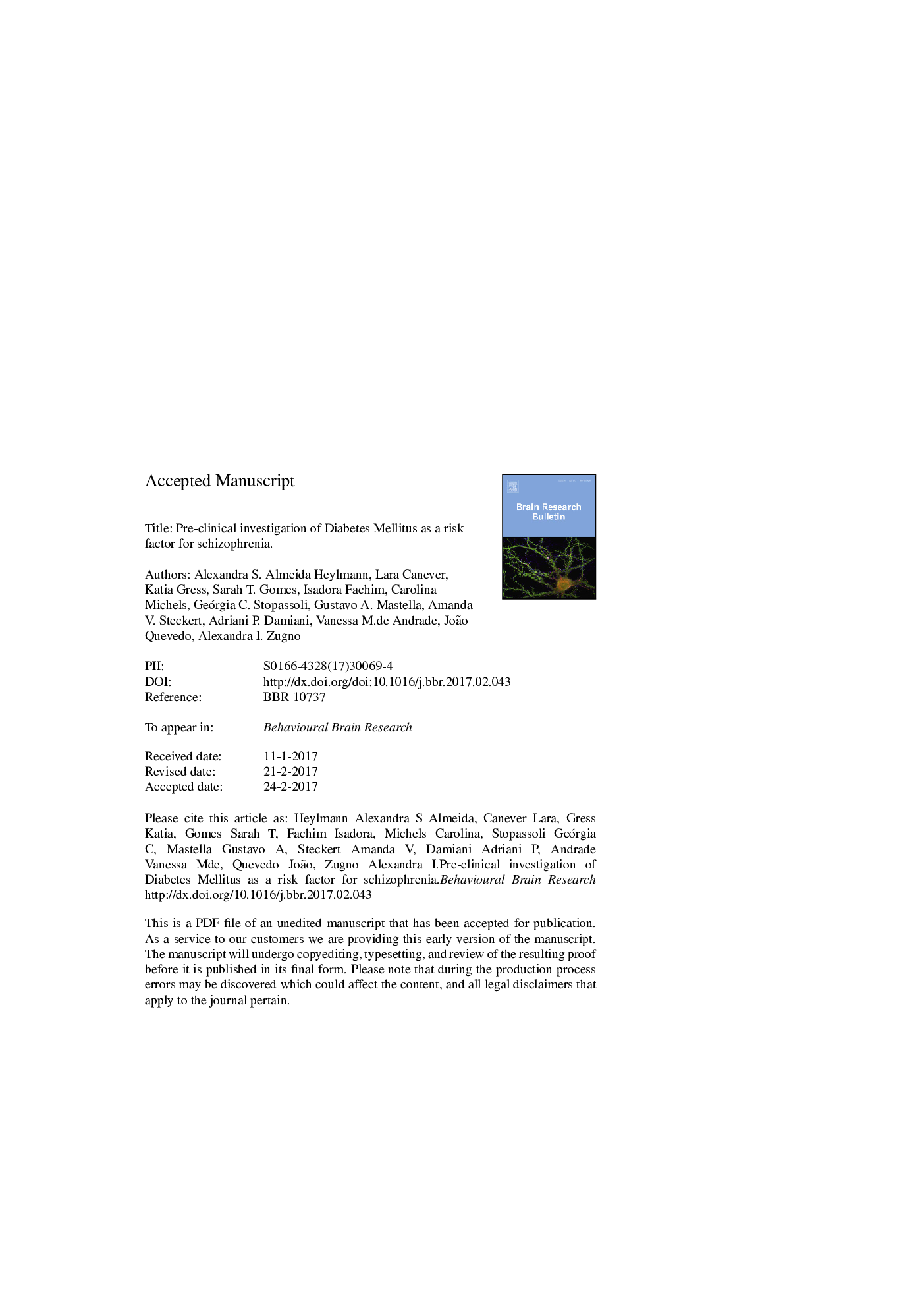| Article ID | Journal | Published Year | Pages | File Type |
|---|---|---|---|---|
| 5735550 | Behavioural Brain Research | 2017 | 31 Pages |
Abstract
This study investigated the behavioral and biochemical parameters of DM1 as a risk factor in an animal model of schizophrenia (SZ). All groups: 1 Control (saline + saline); 2 Alloxan (alloxan + saline); 3 Ketamine (saline + ketamine); 4 (Alloxan + Ketamine) were fasted for a period of 18 h before the subsequent induction of DM via a single intraperitoneal (i.p) injection of alloxan (150 mg/kg). From the 4th to the 10th days, the animals were injected i.p with ketamine (25 mg/kg) or saline, once a day, to induce a model of SZ and 30 min after the last administration were subjected to behavioral testing. After, the animals were decapitated and the brain structures were removed. Ketamine induced hyperactivity and in the social interaction, ketamine, alloxan and the association of alloxan + ketamine increased the latency and decreased the number of contacts between animals. The animals from the ketamine, alloxan and alloxan + ketamine groups showed a prepulse startle reflex (PPI) deficit at the three intensities (65, 70 and 75 dB). Ketamine was shown to be capable of increasing the activity of acetylcholinesterase (AChE) in the brain structures. Combination of alloxan + ketamine seems to have an exacerbated effect within the cholinergic system. For lipid peroxidation and protein carbonyls, alloxan + ketamine appear to have intensified lipid and protein damage in the three structures. Ketamine and the combination of ketamine + alloxan induced DNA damage in both frequency and damage index. This research found a relationship between DM1 and SZ.
Related Topics
Life Sciences
Neuroscience
Behavioral Neuroscience
Authors
Alexandra S. Almeida Heylmann, Lara Canever, Katia Gress, Sarah T. Gomes, Isadora Fachim, Carolina Michels, Geórgia C. Stopassoli, Gustavo A. Mastella, Amanda V. Steckert, Adriani P. Damiani, Vanessa M. de Andrade, João Quevedo, Alexandra I. Zugno,
